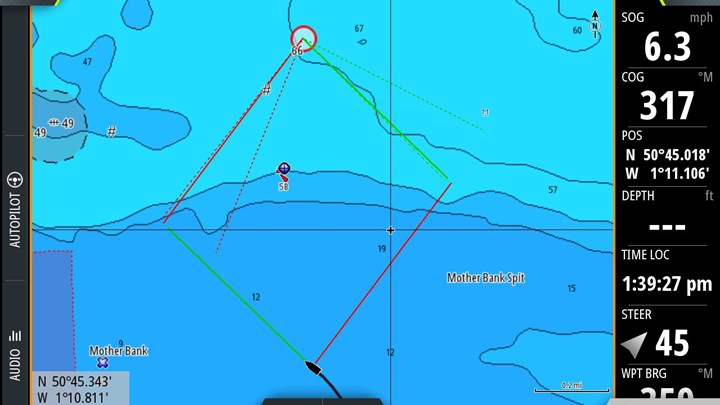How accurate is the sensor vs. the typical wind sensor?
There is no “typical” sensor, however we have tested the WS300 series against many other sensors and, through design iteration, have produced a sensor that is significantly more accurate than other sensors – up to 10x more accurate in some cases (see test results above.)
What is the maximum range of the wireless (WS320) sensor?
Wireless range is a difficult specification to quantify in a real-life condition, as such we have been quite conservative with the range and advise use in applications requiring range up to 30m (100’). To make user selection easier we quote this as a mast height of up to 25m, based on a fairly typical system layout.
How do I know the wireless connection is good on my installation?
Within 30 seconds of power on you will see smoothly updating wind data with no gaps, but as a secondary check you can view Signal Strength % in the WS320 unit data in the Device List of a MFD – anything over 25% should provide reliable connection in a typical installation.
How much sun is needed to charge the WS320?
The unit is designed to charge on an overcast day, users will see positive charge during all normal daylight conditions.
How long will the WS320 battery last without charge?
If the unit is in constant use (with main system switched on) and in the unlikely event of no charging at all, it will continue to operate for over 2 weeks.
How long is the overall lifetime of the WS320 battery?
We expect the battery to require replacement after 3-5 years, depending on environment and use level.
What should I do with my WS320 if I remove my mast over winter?
It is recommended to unmount the unit and store it in a location where it will receive a few hours of daylight each day. If you decide to store the unit out of daylight it is recommended to disconnect the battery – you will need to reconnect the battery and place in daylight to ensure some charge before refitting the unit, you will also need to re-pair the unit with the base station before re-installation if the battery has been disconnected.
Will my unit discharge overnight?
Only slightly if you are sailing, and barely at all if you are in the marina with the main instrument system turned off – the wind sensor runs in a low power mode until the wireless interface on the system is powered on. The typical overnight power use is topped back up with an hour or two of daylight.
Can I see the battery charge status of the WS320 sensor?
Yes. By viewing the incoming data of the WS320 in the Device List of a display unit the user can see Battery Charge Status (% of maximum charge rate provided by solar) and Battery Status (% charged status [100% = full])
If the WS320 is so good, why would I use the wired version (WS310)?
Installations with mast heights of 25m+, installations on larger boat that may have significant 2.4GHz communications on board (Bluetooth, Wi-Fi) which may reduce operational range of the WS320, boats of carbon or metal construction where base station location may be obscured or a more straight-forward desire for a traditional wire!
The unit is clearly very accurate, will B&G be replacing the Vertical MHU units with this sensor?
Yes - the WS700 series replaces the earlier Vertical Masthead Units.
Why did B&G select a cup and vane design rather than an ultrasonic design?
Ultrasonic sensors have many advantages however in real-life sailing conditions they suffer from some disadvantages that make them unacceptable for our application (which includes steering the boat under autopilot safely) with several sailing angles (both wind angles and heel angles) where the physical design restrictions associated with ultrasonic sensors affect wind angle and wind speed measurement. Performance in certain weather conditions (heavy precipitation, fog or icing) is also uncertain without complicated and heavy design counter-measures.
























































